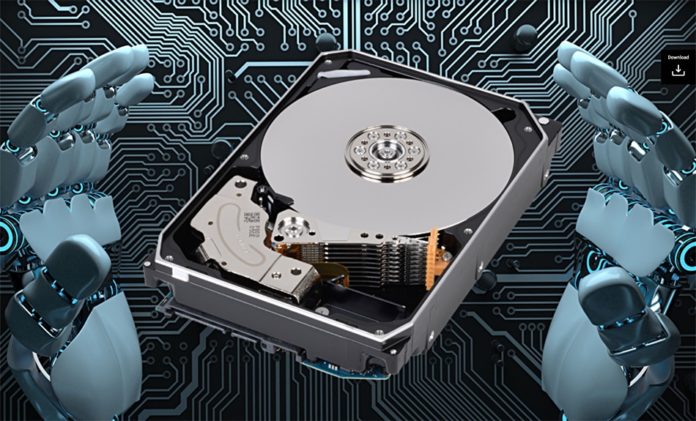Hard drives remain indispensable, and predictions that SSDs will replace them in the enterprise are wrong. So says Rainer Kaese, a senior biz dev manager at Toshiba Storage Solutions.

He has penned his thoughts in a blog post, “How to store (petabytes of) machine-generated data”, arguing that there is no way SSDs can be used to store the petabytes and coming exabytes of data generated by: institutions such as CERN – with its 10PB/month data storage growth rate; applications such as autonomous driving and video surveillance; the Internet of Things; and, hyperscalers exemplified by Facebook, AWS, Azure and Google Cloud.
Kaese writes: “This poses enormous challenges for the storage infrastructures of companies and research institutions. They must be able to absorb a constant influx of large amounts of data and store it reliably.”
He declares: “There is no way around hard disks when it comes to storing such enormous amounts of data. HDDs remain the cheapest medium that meets the dual requirements of storage space and easy access.”
Why?
The only candidate disk replacement technology is NAND SSDs but “Flash memory… is currently still eight to ten times more expensive per unit capacity than hard disks. Although the prices for SSDs are falling, they are doing so at a similar rate to HDDs.”
We know this, but SSD replacement proponents such as Wikibon analyst David Floyer, and SK hynix say SSD pricing will fall faster than disk drive pricing because SSD capacities will rise faster than disk drive capacities.
Kaese argues that the coming deluge of machine-generated (IoT) data cannot be deduped effectively, so lower SSD pricing based on deduped-enlarged effective capacity won’t apply. It will be a raw TB/$ comparison.
Flash fabs
He adds: “Flash production capacities will simply remain too low for SSDs to outstrip HDDs.” Flash fabs cost billion of dollars and take two years to build. But HDD output can be increased relatively easily “because less cleanroom production is needed than in semiconductor production.”
In a recent article, Wikibon’s Floyer claimed flash capacity is already being made overall than disk capacity: “Flash has already overtaken HDDs in total storage petabytes shipped.” He argues NAND’s volume production superiority is driving flash prices down faster than disk drive prices.
Disk energy assist
Kaese notes that “new technologies such as HAMR (Heat-Assisted Magnetic Recording) and MAMR (Microwave-Assisted Magnetic Recording) are continuing to deliver [disk drive] capacity increases.” We should assume a 2TB/year disk capacity increase rate “for a few more years,” he says. This will continually decrease disk’s $/TB costs.
Floyer, in contrast, argues that HAMR and MAMR costs will be too high; “Wikibon believes HDD vendors of HAMR and MAMR are unlikely to drive down the costs below those of the current PMR HDD technology.”
Who is right?
Kaese references an IDC forecast “that by the end of 2025, more than 80 per cent of the capacity required in the enterprise sector for core and edge data centres will continue to be obtained in the form of HDDs and less than 20 per cent on SSDs and other flash media.”
Wikibon makes its own prediction: “Wikibon projects that flash consumer SSDs become cheaper than HDDs on a dollar per terabyte basis by 2026… Innovative storage and processor architectures will accelerate the migration from HDD to NAND flash and tape using consumer-grade flash.”
Who should we believe? Do we take on board the disk drive makers’ spin or Wikibon flash comments? Blocks & Files will return to the topic in 2026, drawing on the services of Captain Hindsight, our infallible friend.








